Wide-eyed, she said, “This is what it should look like? It’s beautiful!”
Despite spending a year helping to restore staghorn coral in the Florida Keys, this was the first time my snorkeling partner, Christina, from Coral Restoration Foundation had seen a huge staghorn colony in the wild.
We were snorkeling at Pulaski Shoal, one of the largest known thickets of staghorn remaining in Dry Tortugas National Park. She was joining me on a week-long expedition focused primarily on transferring staghorn corals grown in The Nature Conservancy’s nursery to the reef. She was so enthralled by the wild staghorn corals that I could hear her giggling through her snorkel.
Like Christina, I am awestruck by the density of healthy colonies in places like Pulaski and, surprisingly, off the coast of Fort Lauderdale. Staghorn once formed extensive thickets throughout the Florida reef tract and the Caribbean and were both iconic and a real wonder of the underwater world.
This fast-growing (for coral) antler-shaped coral provides shelter for all the little critters we love to see on the reef. When you work on reefs like I do, though, it’s easy to get discouraged by all the gloomy news about corals and the reality of diseased and distressed reefs. Places like Pulaski Shoal remind us what we are working so hard to achieve through restoration.

Reefs in the Keys have been in decline since the 1970s due to multiple stressors, including coral bleaching, disease outbreaks, hurricanes and cold snaps. Ongoing monitoring studies are showing a continued decline in coral cover and no significant recruitment of juvenile corals has been observed since the mid-’90s.
It is thought that remaining coral colonies are now spaced too far apart to reproduce effectively with other colonies, making it a challenge for them to repopulate the reefs naturally. To overcome this hurdle, the idea of large-scale restoration was born, growing and transplanting corals to effectively increasing the chance of successful reproduction. Today, this idea is included in nearly every plan and strategy for protecting our reefs.
Staghorn restoration got its start in Florida in the Upper Keys with the organization now known as Coral Restoration Foundation. The effort quickly expanded to include partners all along the reef, from Fort Lauderdale through the Dry Tortugas. In Florida alone, tens of thousands of staghorn corals are outplanted to the reefs each year. Genetically-distinct colonies are placed at each site to increase the likelihood of cross-fertilization and successful recruitment of larvae within and between restoration sites.

In 2010, the Conservancy established a coral nursery in the Dry Tortugas with funding from the National Park Service. This location is important because ocean currents there help connect the Caribbean to the rest of the Florida reef tract. The reefs and fish communities there are more protected from the pressures of fishing, diving and anchoring, thanks to intensive management and the remote location. Our nursery houses about 1,000 corals representing 11 original genetic individuals, or parent colonies. We outplant about 1,000 corals each year to sites within park boundaries.
On this year’s annual outplanting trip in June, I was joined by 6 other scientists and fellow restoration practitioners from the Florida Fish and Wildlife Research Institute, Florida Institute of Technology, Coral Restoration Foundation and University of Miami. Picture a white 54-foot boat with the deck covered in a half dozen pink and yellow plastic milk crates carefully nested in large tubs of seawater cradling hundreds of our soon-to-be outplants.
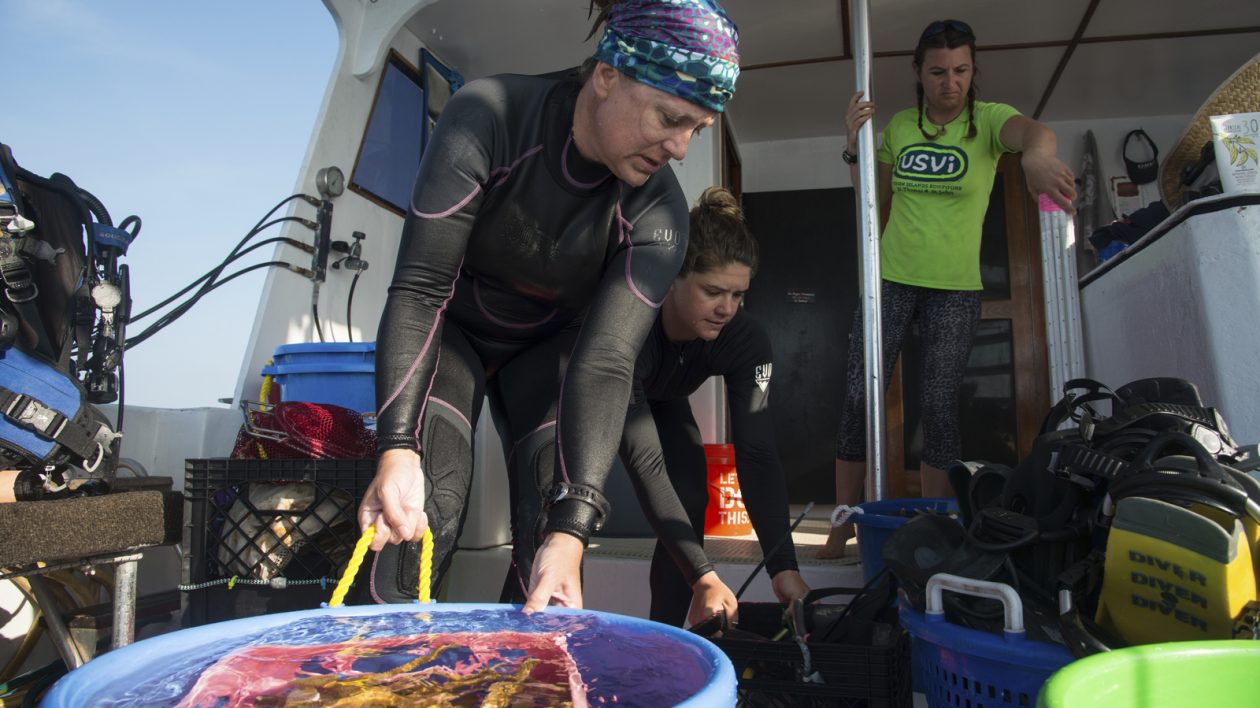
This seems like an almost impossible outplanting goal, but we have a week of picture-perfect tropical weather and clear turquoise waters – the best I’ve seen out there in years.
For me, the excitement of spending seven days in arguably one of the most beautiful places in Florida was tempered by the nagging feeling I always get that I’ve forgotten something important.
Dry Tortugas is 70 miles from Key West, almost as far as Cuba. Given the distance and the day-long transit just to get there, once there, we have to make do with what we’ve brought. We had an ambitious schedule to outplant to a new site, spend some time cleaning the nursery and preparing it for another year of grow-out, collecting new stock, and setting up a test outplant site where the public has access and can view our work.
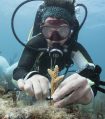
It took me a day or two to feel assured that I hadn’t forgotten any of the necessary brushes, buckets, zip-ties, hammers, masonry nails or a swimsuit (sometimes it’s the most obvious thing that you overlook!)—the tools of the trade for outplanting.
With the stars—which are also great at Dry Tortugas, by the way—aligned, we outplanted a total of 1,220 colonies. More than 900 corals were outplanted at a new site and the remainder filled gaps in two of our original sites from 2012. We spent an afternoon trekking across Loggerhead Key by foot with dive gear to outplant 10 colonies at a reef called Little Africa. This reef is accessible to some park visitors, so they’ll be able to see the scope and importance of our restoration work firsthand.
That inspiring morning at Pulaski Shoal resulted in the collection of four “fragments of opportunity.” These are corals found in a place where they are unlikely to survive, generally in the sand where they can’t attach to hard substrate.
We brought the fragments back to the nursery for grow-out. We spent hours in a nursery cutting away old dead tissue that had begun to attract encrusting sponges and algae, which can encroach on live tissue, as well as newly dead tissue from a particularly large annual bloom of filamentous drift algae. We collected data at restoration sites to help us better understand why corals at certain sites have higher survival rates than others. And, through all of this hard work, we strengthened relationships between organizations and shared knowledge, making all of our programs a bit stronger. A hard day of teamwork in dive gear, followed by a sky full of stars, a delicious hogfish dinner and a rousing game of charades is the perfect recipe for building lasting friendships and collaborations.
As the staghorn restoration program moves forward, the Conservancy and our partners are working diligently to explore other avenues of restoration and answer important questions to increase our effectiveness and efficiency at restoring ecosystems and their functions.
How do we best propagate the slower-growing boulder coral species? Can we successfully collect spawn from wild colonies and settle out the larvae for outplanting? What genetic strains are better adapted to warmer sea temperatures, disease tolerance and the predicted future conditions associated with ocean acidification? Can we model where our restoration can have the biggest benefit to people by protecting our shorelines and creating more fish? And, of course, when’s the next trip?
We’re also catching the eye of new partners like the restaurant chain, Bonefish Grill. Bonefish Grill has committed $175,000 to help fund the Conservancy’s coral nurseries and coral restoration efforts in Florida and the Caribbean. The company is one of the first partners to support the Conservancy’s Plant a Million Corals Initiative, which seeks to restore more than one million corals across the region’s reefs, as well as share restoration and conservation practices.
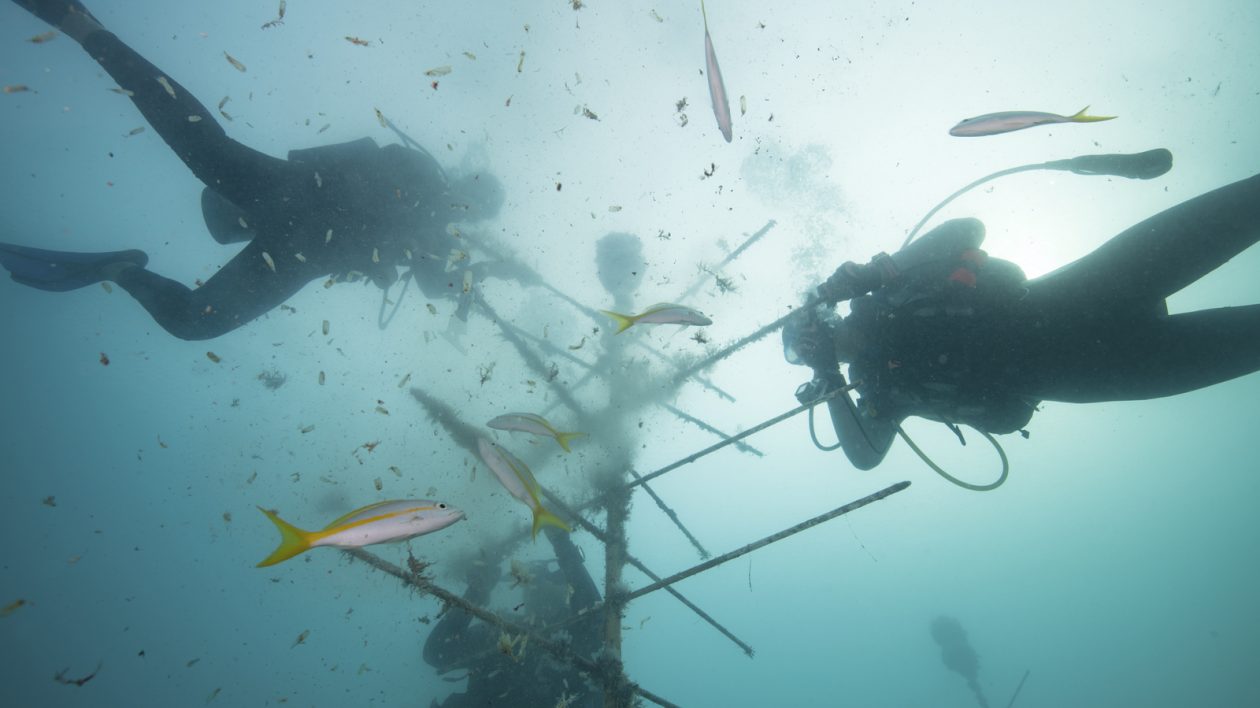
“We applaud The Nature Conservancy for their dedication to protecting and preserving the ocean’s resources,” said David Schmidt, President of Bonefish Grill. “We’re committed to ensuring our team and guests truly appreciate the important role the coral reef plays in providing the amazing bounty of the sea and are proud to participate in raising awareness for the Conservancy’s Plant a Million Corals initiative.”
This year was my second leading the expedition, and I was missing a few of my regular partners. It always amazes me to watch a group of strangers with a shared passion work so efficiently together with the added challenge of having limited communication underwater.
Each year, we have stories that stick with us after the trip. This year, some of my favorite memories include seeing nudibranchs at every site and yet having our photographer miss them every time, being followed around the nursery by a curious hogfish that was later dubbed my boyfriend, and forgetting that we had asked a colleague to “hold a buoy” for us at the surface because the line wasn’t long enough and coming up from the dive 20 minutes later to her with a very sore arm. Best buoy-tender ever!
Caitlin Lustic is The Nature Conservancy’s South Florida conservation manager.
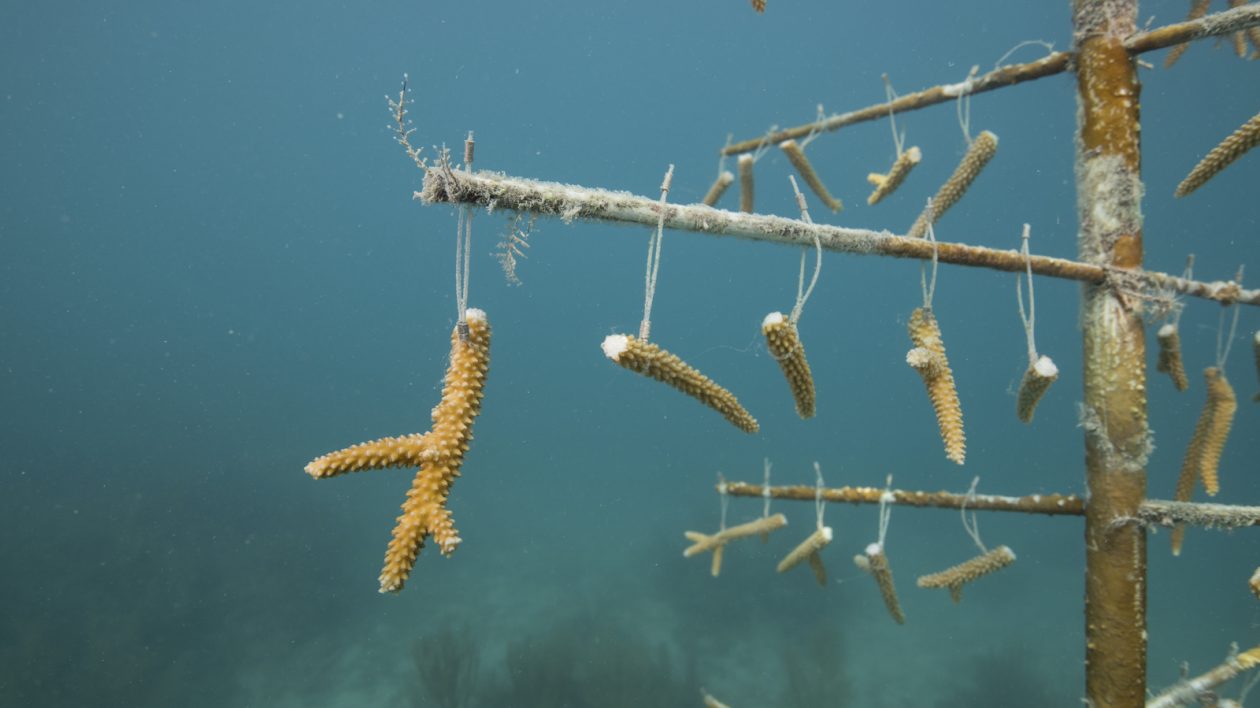
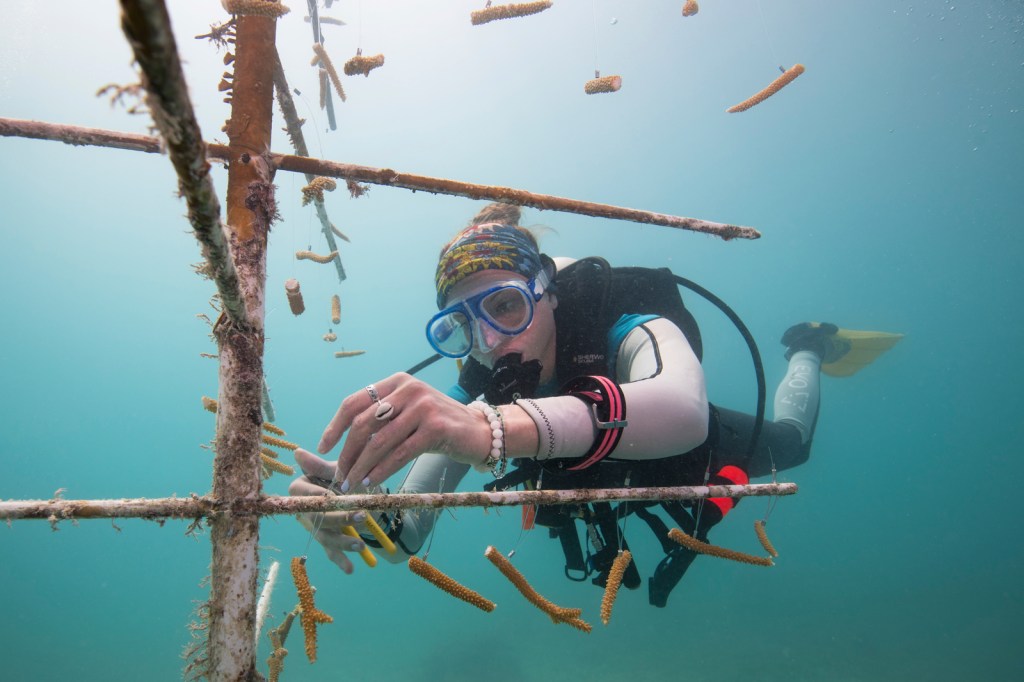


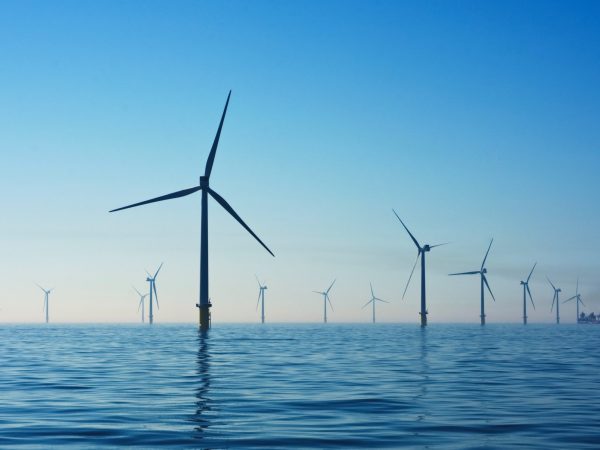
Amazing !!!!!!
I was wondering if this could be done in The Great Barrier Reef?
The Dry Tortugas- 70 miles from Key West, almost as far as Cuba……..I don’t trust Cuba.
Is there any way to protect this area of water?
Thank you for doing what you do……you are making a great difference in the planet.
Would love to see this same nursery tree in a couple years to see how they are adapting. Is that a small coral branch growing itself at the end of the branch in the photo? Hope so.
Awesome! Do you accept volunteer divers? I live in Florida and would love to help!
Another surprise project that was in the back of my mind for years… The actual process remained unknown until this blog appeared. Keep the work going for coral restoration and we’d like to see that this effort, in a small way, will contribute to the slowing of climate change…? I’ve worked out of Key West in the past and it was a flying project that put us over the area at moderate altitudes for five hours each flight. The view of the blue-green ocean and high visibility of the coral formations and such was a treat.